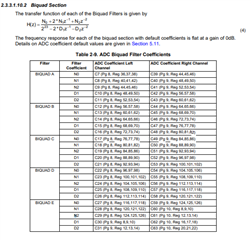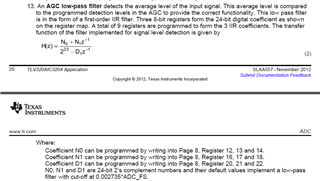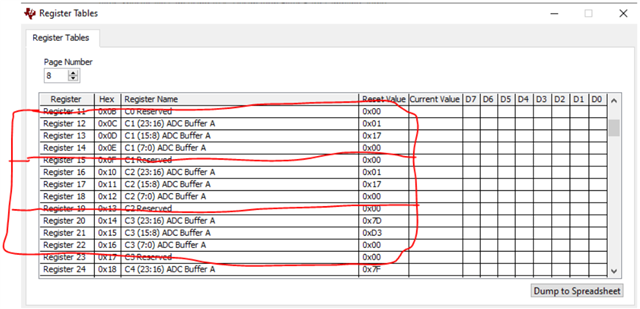Hi,
I want to know how can I disable Biquad filter. Specifically I am using ADC Decimation Filter B for sampling audio over microphone, In that there are 3 Biquad filters. I want to disable Biquad filter C. Or is there any way to disable it, If yes then I want to disable it.
Thank you,
Kishan











